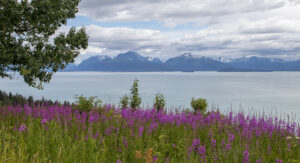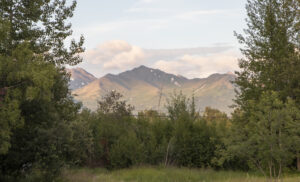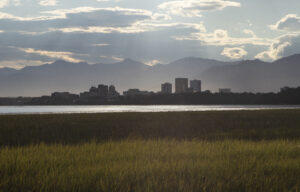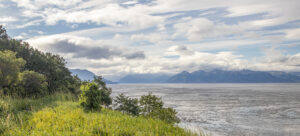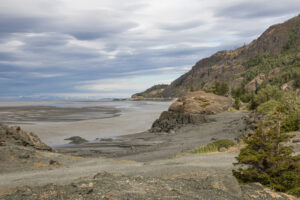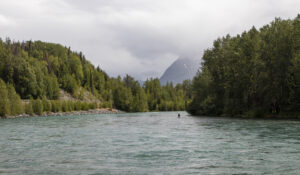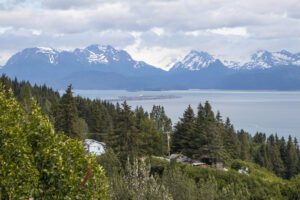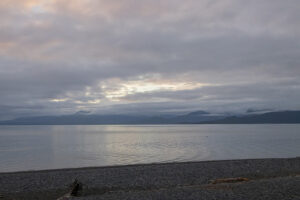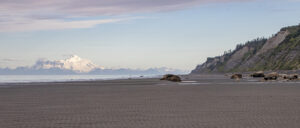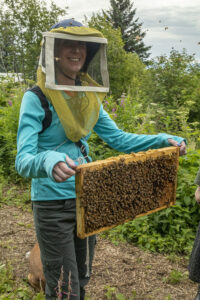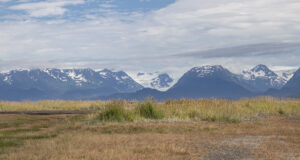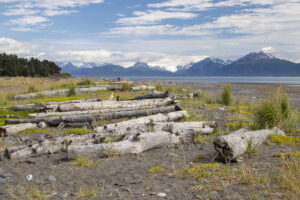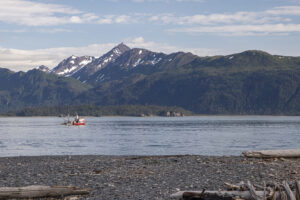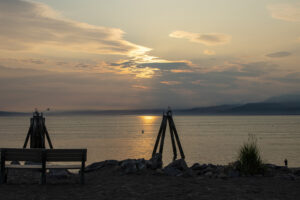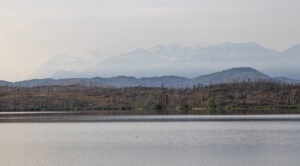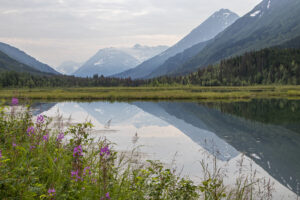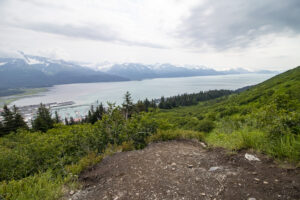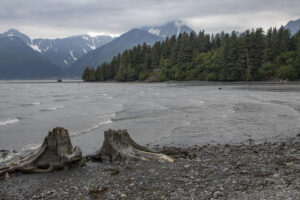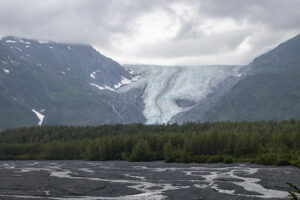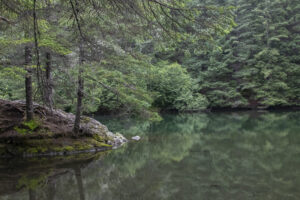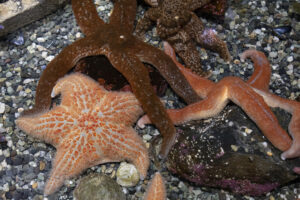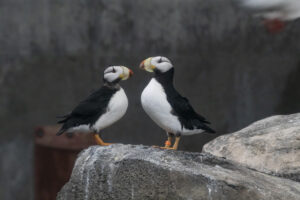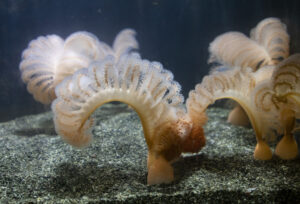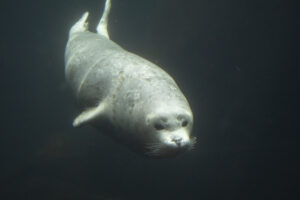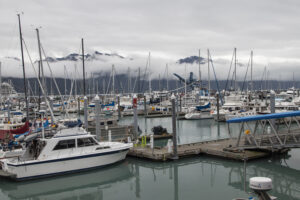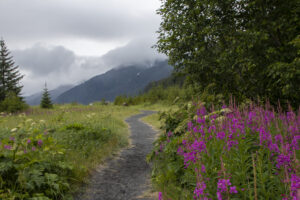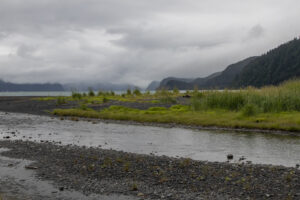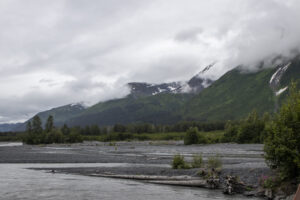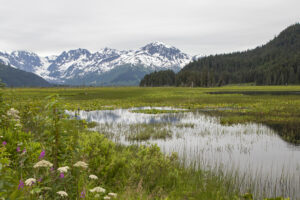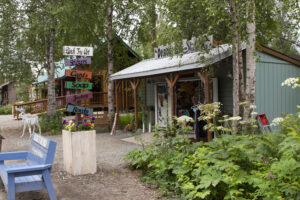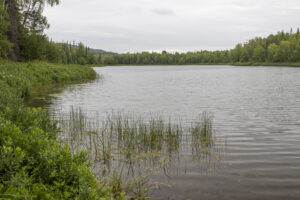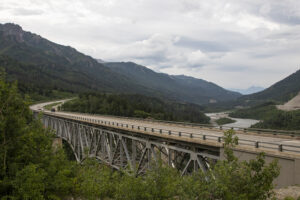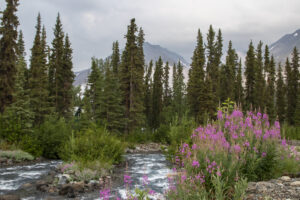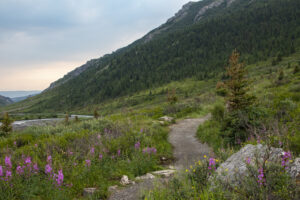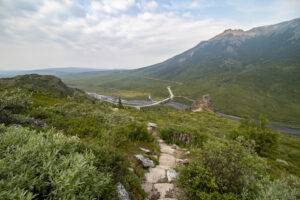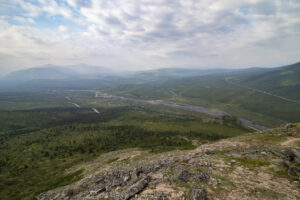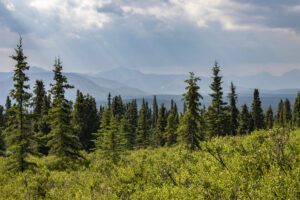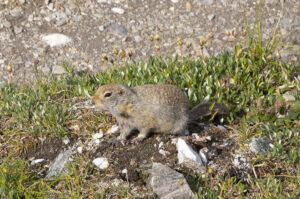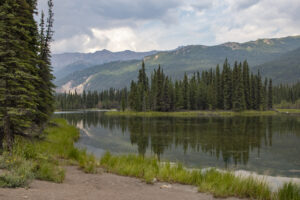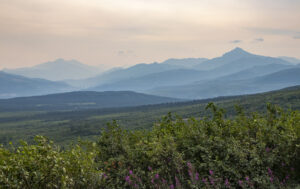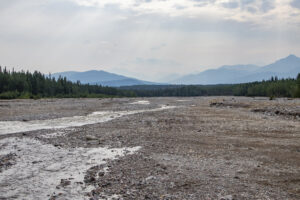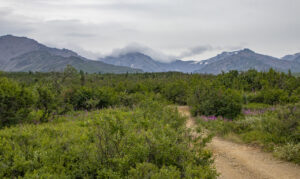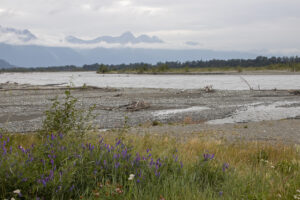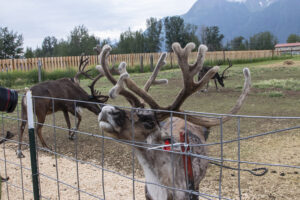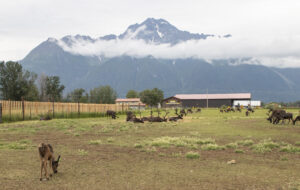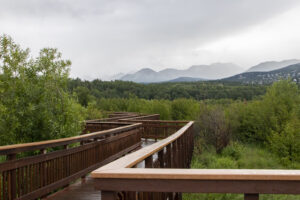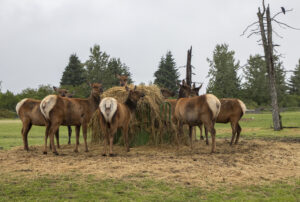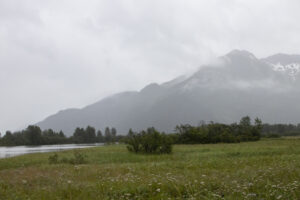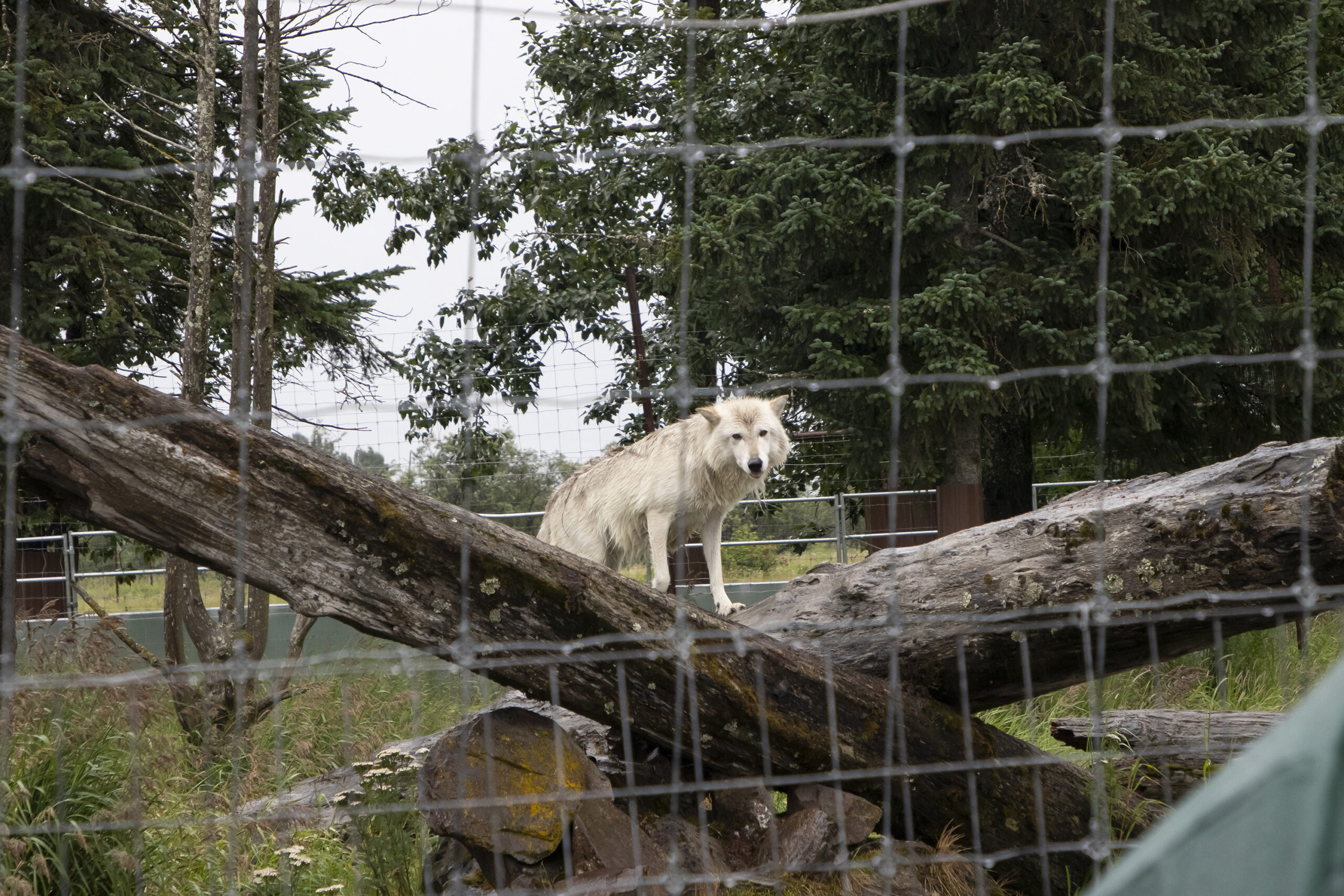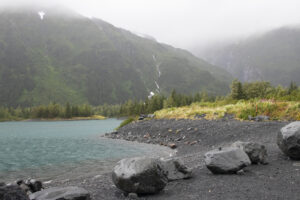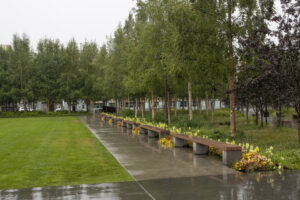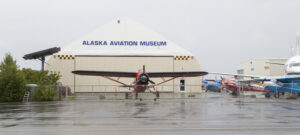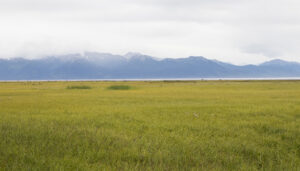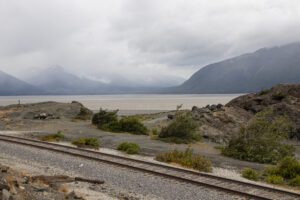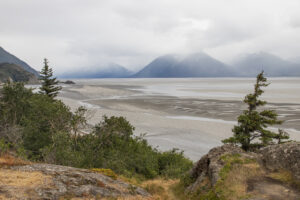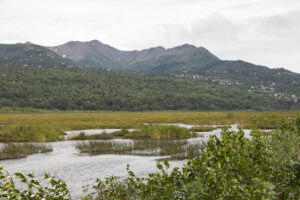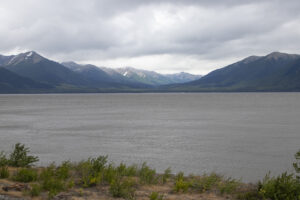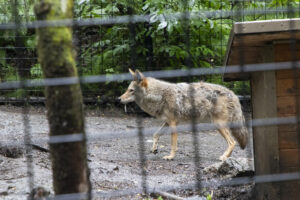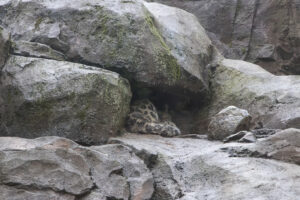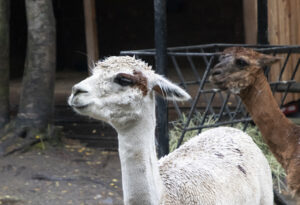Kenai Peninsula, Denali, and Anchorage, Alaska
Here are some things to know about Alaska:
- All the beautiful photos you see on tourist brochures and postcards were taken on the eight clear, sunny days of the year. This isn’t to say that it’s not beautiful, even on cloudy days, but don’t expect to see the “midnight sun” even in the middle of summer.
- Around the summer solstice, when it’s not cloudy, it’s never really dark in Alaska. If you look at a sunrise and sunset time chart, you’ll note there’s no nautical or astronomical twilight. So even after the sun has set and before it’s risen, there’s a lot of ambient light.
- Alaska is far away and very big. It’s not actually an Arizona-sized state just southwest of Texas, the way it’s portrayed on maps as an inset. (If you didn’t know this, maybe it’s time for a refresher in geography.) It’s as big as the upper midwest and, if you live on the East Coast, it’s a very, very long travel day to get there.
The upshot of all of this is that Alaska is rugged, remote, and amazingly beautiful, and to even scratch the surface, you’ll need to visit several times. We’re already starting to think about our next trip!
A note on mosquitos: While I’m glad I invested in a cheap over-the-hat mosquito net that proved useful in Alaska, the mosquitos were not the worst we’d ever encountered. That “honor” goes to the mosquitos of Milford, Pennsylvania, which swarmed around our heads in a cloud (think Pigpen from the Peanuts).
Day 1: Travel
We started our day before 5am Eastern and ended it nearly 24 hours later at midnight in Anchorage. Despite the airline horror stories, we managed to make all our flights and had a one hour delay getting off the ground on our final leg to Anchorage. Even though we were extremely tired, we took a few pictures of the mountains from a bike path by our hotel.
Day 2: Anchorage to Homer
Since it was sunny in Anchorage, we decided to spend the morning there in the event it was rainy or overcast when we returned to the city a week later. (This proved to be a good decision.) Our first stop was Earthquake Park where a magnitude 9.2 earthquake in 1964 caused the clay soil beneath the Turnagain Heights bluff to collapse, resulting in the current landscape of the Anchorage coast.
Next, we went to Kincaid Park, a 1,500 acre park along the city shore, where hiked along the Cook Inlet.
Afterward, we set off to Homer, stopping at Beluga Point…
…along the Kenai River…
…and at the Kenai National Wildlife Refuge in Soldatna.
At the Homer city limits, there’s an overlook of the Cook Inlet and the Kachemak Bay. In the top photo, if you look just below the mountains, there’s a piece of land. That’s the Homer Spit, a narrow, four-mile stretch that juts into the Bay, and where we’d be staying for the next two nights.
After arriving in Homer, we did a tasting at Bear Creek Winery. The Alaskan climate is not conducive to wine grapes, so Bear Creek specializes in fruit wines, including gooseberry and black currant.
This is the view from our hotel porch at Land’s End.
Day 3: Homer
I woke up with a headache and couldn’t get back to sleep, so I took a very early walk along the beach outside our hotel.
Later that morning, we hiked the Diamond Creek Trail to Kachemak Bay, where the tide was out and small tidal pools were forming. Much of the trail is on blue clay and with recent rains, it was slick. When we got to the beach, we got our first glimpse of the enormous Alaska mountains of the Aleutian Range in Lake Clark National Park. We believe this one is Mount Iliamna, a stratovolcano rising 10,016 feet. We were scheduled to do a flightseeing tour of Lake Clark several days later and were excited to see these peaks up close.
We took a tour of Stoked Beekeeping, an apiary in Homer that specializes in fireweed honey. I’m rather afraid of bees but took my turn holding a frame from the hive.
The tall, purple wildflowers that are ubiquitous in Alaska are fireweed, so named because they are one of the first flora to repopulate an area hit by wildfire. The timing of our trip was fortuitous as the fireweed was blooming early this year. It made for great photos, but it supposedly portends an early winter.
After the apiary tour, we walked along the Homer Spit.
Then we went to Bishop’s Beach, also along the Kachemak Bay.
With the sun setting close to midnight, we took a late walk along the beach at Land’s End during “golden three hours.”
Day 4: Homer to Seward
We caught the morning light as we left Land’s End early to arrive in Seward before noon.
Although I’d had a headache and was very tired the day before, I otherwise felt fine. But as we started toward Seward, I knew I was coming down with something. I was relieved that I’d worn a mask indoors since the start of our trip (mostly because I didn’t want to get sick) and that we generally stay away from people when we travel.
We stopped along the way at Seven Lakes, an area which is recovering from the 2019 Swan Lake Fire.
We also pulled off at the Tern Lake wildlife viewing area at the junction of the Seward and Sterling Highways.
We wanted to hike Mount Marathon, a 4,826 foot peak in Seward, early because the weather forecasts were calling for clouds in the afternoon and the next day. I was exhausted and not really in any condition to go hiking, but I didn’t want to miss it, so we started up the mountain. I was struggling, so we decided to turn around when we’d reached an overlook of Resurrection Bay about half way to the summit. I have no idea how I managed to do this hike.
Shortly after we started our descent, the clouds rolled in, and by the time we got to Afognak Beach (below), they were starting to bear down on the mountains.
We drove from Seward to Exit Glacier in Kenai Fjords National Park. There’s a pull-off along the Resurrection River (below) and a trail in the park where we were able to hike much closer to the glacier.
Later that evening, we walked the mile-long loop around Two Lakes Park in Seward. With the cloud cover, it actually seemed “dark” that night.
Day 5: Seward
After consulting Dr. Google, I realized I had omicron BA.5 symptoms, though the one grocery store in Seward (population less than 3,000) didn’t have any tests, so I wasn’t able to get a firm diagnosis. I needed a nap, and I needed to not be around other people. So my husband went to the Alaska Sea Life Center while I got some much needed rest.
Later in the day, I was feeling better, so we stopped by the harbor…
…and then did an easy hike to Tosina Point, a small outcropping in the Resurrection Bay.
Our hotel, Exit Glacier Lodge, where we had a cabin, was across the street from the Resurrection River, where we made our final stop on our day in Seward.
Day 6: Seward to Denali
On our way to Denali, we stopped on the side of the road near the end of the Turnagain Arm to take pictures. It’s one of those places they really needed a pull-off.
We broke up the six-and-a-half hour trip with a detour to Talkeetna and drove to Riverfront Park where, on a clear day, we might have been able to see Denali, had it not been cloudy.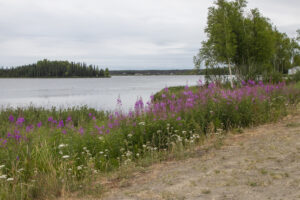
We weren’t able to see the mountain, but we did find outdoor dining for lunch. Talkeetna reminded us a lot of Floyd, Virginia, a small, artsy town that we enjoy visiting.
We walked a bit at Talkeetna Lakes Park, which was a good break before we finished the rest of the drive to Denali.
Although it rained most of the way from Talkeetna to Denali, the weather cleared enough in the evening to drive to Healy, the closest town to our hotel, to check out the scenery and to pick up some bug spray.
We settled into our cabin at McKinley Creekside Cabins. This was the view from our cabin.
I could have stayed there an entire week. It was quiet and comfortable and had a front porch where we could enjoy the creek. And it’s a 15 minute drive to Denali.
Day 7: Denali
Although it wasn’t a cloudy day, the skies were filled with smoke from nearby wildfires, including two in the park, according to the rangers. Nevertheless, we enjoyed spectacular scenery and three great hikes, though we weren’t able to see the park’s namesake peak.
For our first hike, we drove to the trailhead of the two-mile Savage River Loop Trail.
There is one road in the park, and Savage River, 15 miles from the park entrance, is as far as private vehicles are allowed to drive on that road. The road itself extends for 92 miles, though it’s currently closed at Mile 43 due to the Pretty Rocks Landslide. So, unless we got a flight, we wouldn’t be able to get close to Wonder Lake.
We’d bought tickets for the bus, which continues to Mile 43, and planned to return to the park entrance to catch the bus at noon. However, after learning that the bus ride was several hours round trip, we decided to stay in Savage River and do the Savage Alpine Trail, which starts at the same trailhead as our previous hike and continues for about four miles to a transit bus stop, where we could catch a ride back to the trailhead.
It was a great choice. The views were amazing, despite the smoke.
There were also arctic ground squirrels who were little hams for the camera!
Denali is very unlike other national parks. At most parks, signs tell hikers to stay on the trails, and popular sections teem with visitors. At Denali, visitors are encouraged to hike off trail, and it’s impossible to see most of the park without doing so. And we were surprised at how few people were there. We only crossed paths with a few other hikers on the Alpine Trail, and the parking lots were never full.
After returning to the visitor center for a late lunch, we hiked to Horseshoe Lake. Because of the direction of the sunlight, it was rather drab at first, but when we came around to the other side of the lake, the glacial color of the water finally picked up.
We really needed more time to explore the park, though even if we’d stayed longer in the area, there’s no guarantee we’d have seen more. It rained the day before we arrived and the day after we left. We do plan to return someday, hopefully to see the mountain and Wonder Lake and to wander a bit more through the park.
Day 8: Denali to Anchorage
Just north of Denali, we took an ATV tour, hoping to cover more distance in the area. Our tour stopped at three overlooks where our very knowledgeable and enthusiastic tour guides gave us information about the history and geography of the area. It was much hazier that morning than it had been the previous day.
I found out I’m not really into ATVs. Although I enjoyed learning about the area and seeing more great scenery, the course was also designed to be an ATV “adventure,” which meant more bumpy and watery terrain than what I would prefer. But, now I know.
We drove to Palmer, where we stopped to take photos of the Matanuska River.
Then it was on to Williams Reindeer Farm! He says “feed me!” And he gets fed.
We got to feed the reindeer and a moose.
Our final stop of the day before arriving in Anchorage was Reflections Lake, just outside of Palmer, where we walked a one-mile loop before it started raining.
Day 9: Anchorage
We were scheduled to do a flightseeing tour to Lake Clark the morning of our first day back in Anchorage, but our trip was cancelled due to a COVID outbreak. Although we’d been looking forward to the tour as a major highlight of our trip, we were also relieved since the weather didn’t look to be conducive to flightseeing.
Unlike our previous day in Anchorage, this day was forecast to be overcast with passing showers. We decided to make the best of it and started off looking for wildlife at the Potter Marsh Bird Sanctuary. It’s just across the road from a shooting range, so we hoped the animals knew to stay on this side. Other than some birds, we didn’t see any fauna.
Then we drove to the Alaska Wildlife Conservation Center at the end of the Turnagain Arm. This is where we saw most of the wildlife on our trip. The center is a home for injured and orphaned animals, who get to live out their lives in a beautiful place without the risk of predators (including humans). Despite the rain, we enjoyed our visit.
We wanted to see Portage Glacier, but the rain picked up. This area is apparently one of the rainiest in Alaska, so we would have been lucky to catch a clear day to see it.
So we returned to the city and toured the Anchorage Museum. By this time, I was more than five days out from first developing symptoms and feeling much better, so after consulting CDC guidelines, I felt it was reasonable to go to the museum, masked and staying as far away from people as I could. The museum has a great collection of historic native artifacts as well as works of modern artists.
With the rain continuing, we went to the Alaska Aviation Museum, which was a decent size and had a fascinating exhibit on the Battle of Attu.
While we were at the museum, the rain let up, and we went to Turnagain Refuge Park, hoping for some good views of the mountains. It was an extremely small park…
…so we drove out toward Beluga Point.
Coming back, we stopped at McHugh Creek, where we drove to a short trail to an overlook onto the Turnagain Arm. It was extremely windy, and we could barely stand as we took photos of the mountain peaks covered in clouds and the sand and water blowing out toward the ocean.
We took photos of Potter Marsh from a pull-off on the side of the road back to Anchorage.
The rain had cleared out by evening, but it was in the forecast for the next day. Fortunately, we had plenty of daylight hours left to visit the Eagle River Nature Center.
Day 10: Anchorage
We tried again to go to Portage Glacier, but we didn’t get much past Beluga Point when we realized that the Whittier area would remain true to its reputation as a very rainy place.
So we headed back to Anchorage to the Alaska Zoo. Normally, I’m not a huge fan of zoos, preferring that animals be left in their natural environments. But the Alaska Zoo is home to many orphaned and injured animals that wouldn’t have survived in their natural environments. I was happy to support this conservation and rescue mission.
Although we saw llamas all over in Peru, I still don’t tire of seeing them elsewhere.
Day 11: Travel Home
When it was time to return home, I was continuing to feel better and out of the CDC’s designated “contagion period,” so I felt comfortable traveling. I continued to wear a mask (one of the very few who did). Once again, our first two flights went smoothly, though our third was delayed due to the flight attendant’s prior flight getting in late. We got home around 1am after another very long travel day.
Now that we’ve unpacked and processed our photos, it’s time to plan the next trip!
Special thanks to our travel agent, The Luxury Travelist, who introduced us to many of these awesome places, including Homer and Seward, and worked with us to plan this trip.
Photos (c) 2022 J. Atwater and D. Atwater. Text (c) 2022 J. Atwater. All rights reserved.
